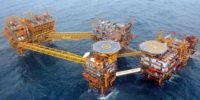Two public-sector infrastructure owners with markedly different upgrades getting underway agree on one thing—that the projects have vastly improved thanks to the use of a new tool that allows participants to measure long-term sustainability and justify how and why investments will benefit users and communities.
The Florida Dept. of Transportation has embraced use of the new Envision infrastructure sustainability rating tool presented by its design-build team that was seeking to manage the $2.3-billion upgrade of Interstate-4. FDOT program manager Loreen Bobo was intrigued that the Skanska-led team's informal use of the tool to rate its construction program resulted in Envision's version of a platinum award, which the firms included in what became a winning proposal.
While the team's project win was based on other factors as well, it has used the tool as a guide to alter project design to reflect added community input, more material reuse and boosted energy efficiency, among other things.
"We need to do the right thing when it comes to the impact we are making on our future, and doing the right thing can start by having the conversation early in the project," says Bobo, who has become the first FDOT employee trained and credentialed to use Envision.
In Madison, Wis., Envision has helped the sewerage district in winning approval of a $4.5-million project to transform an "eyesore" pump station into "a piece of community infrastructure" with added public amenities, says D. Michael Mucha, chief engineer and district director.
"Envision is a powerful accountability and quality assurance tool for the district," he says. "It allowed us to demonstrate to the public—our ratepayers—that their investment in public infrastructure is providing public value." The station is set to go to bid by next month.
In less than three years since its 2012 launch, Envision is fast becoming the tool of choice for infrastructure owners, designers and builders to measure project success in sustainability—and beyond.
Transformational
"Envision is transforming how our clients are thinking about sustainability for infrastructure projects, and at a much faster pace than we imagined," says Michaella Wittmann, HDR's sustainability program founder and director.
We have an internal sustainability training program and have credentialed over 200 people. We aren’t trying to reach a % goal. Rather, we are strategically credentialing HDR leaders (so they understand the Envision goals), client leaders (so they can answer the critical questions and talk about the value of Envision) and our project designers and planners (so they can efficiently implement Envision). Some of our clients have over 100 ENV SPs on staff and many of our clients are asking us to help prepare some of their staff to take the Envision staff.
The approach takes a more holistic view of infrastructure projects than in the LEED measure used on buildings, that rates sustainability through a multitiered, credit-award approach based on resource use, operational resilience, ecosystem restoration, life-cycle costs and return on investment, among other measures.
The product of simultaneous development over the last decade by three engineering associations—the American Society of Civil Engineers, the American Public Works Association and the American Council of Engineering Cos.—and Harvard University's Zofnass Program for Sustainable Infrastructure in its graduate school of design, Envision now is managed and quasi-commercialized by an umbrella group, the Institute for Sustainable Infrastructure (ISI), and supported by a broadening array of industry firms.
Only six projects have gone through official Envision "verification" by ISI, akin to LEED ratings by the U.S. Green Buildings Council. But close to 30 projects are in review or close to it, says William A. Bertera, ISI president and CEO, and as many as 450 being rated in informal self-assessments.
"There's been a lot of tire-kicking," he adds, noting that more of the better-scoring projects now are being pushed for formal appraisals "to have the success recognized." According to Bertera, at least 20% of applicants for ISI official ratings have scored better than they did in self-assessments.
"Envision is critical to the industry because it is the only rating system, among hundreds, with the credibility, scale and reach into hundreds of thousands of capital program decision-makers," says John Williams, CEO of consulting firm Impact Infrastructure, which is developing Envision capability to also measure project economic value and return on investment. "It is the only tool in the world that addresses the value of public benefit and provides real-time feedback. The existence of an objective, transparent and comparable business case makes a huge difference in dealing with stakeholders."
Stantec Vice President Marty Janowitz, whose firm is an ISI charter member, says, "Envision actually asks project teams to consider first what is the right project to pursue." Andrew Sauer, green infrastructure manager for Burns & McDonnell, adds that it "can help sell new ideas that sometimes are not even on the table."
The New York City Dept. of Environmental Protection turned to Envision after investigating "many of the 200-plus rating systems on the market" and has done 37 self-assessments on bridges, dams and water-wastewater facilities, says a spokesman. "Envision is not a 'one-size-fits-all' application," he says, adding that the agency "dug deeper" once it validated results. It now is "actively pursuing" five verifications through ISI, he says.
Some 3,200 firm and owner professionals have passed ISI's online Envision credentialing process, with Bertera predicting the number could surpass 100,000. Many firms have set internal goals for required or encouraged credentialed employees and are touting that in proposals.










Post a comment to this article
Report Abusive Comment